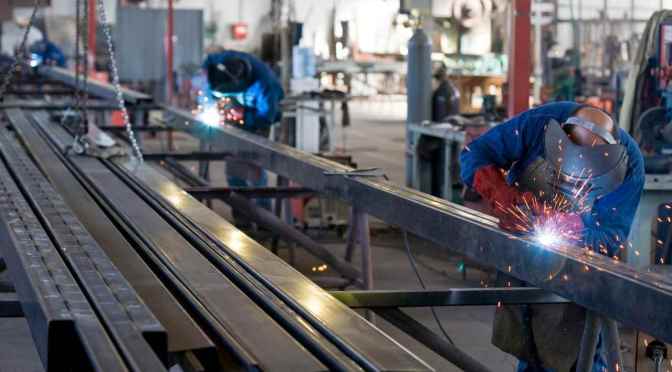Building the Future: Innovations in Steel Fabrication Technology

Steel fabrication technology has evolved significantly over the years, paving the way for new innovations that are revolutionizing the construction industry. From advanced robotics to 3D printing, these new technologies are changing the way steel structures are designed and built. Let's explore some of the most exciting innovations in steel fabrication technology that are shaping the future of construction.
Advanced Robotics in Steel Fabrication
Robotic Welding
- Robotic welding arms are equipped with advanced sensors and precision control systems to ensure accurate and consistent welds.
- Robotic welding can significantly increase productivity and efficiency compared to manual welding processes.
- These robots are programmed to work around the clock, allowing for 24/7 production without the risk of human error.
Robotic Cutting and Forming
- Robotic cutting machines are capable of cutting steel with precision and efficiency, reducing waste and material costs.
- Robotic forming machines can bend and shape steel with high accuracy, enabling complex designs to be realized with ease.
- These robots can handle heavy-duty tasks that would be challenging for human workers, improving overall safety in the fabrication process.
3D Printing in Steel Fabrication
Direct Metal Deposition
- Direct metal deposition 3D printers can create intricate steel parts layer by layer, reducing lead times and costs associated with traditional manufacturing methods.
- This technology allows for the production of customized steel components with complex geometries that would be difficult or impossible to achieve with conventional fabrication techniques.
- 3D printing in steel fabrication is becoming increasingly popular for prototyping and small-scale production, offering flexibility and speed in manufacturing processes.
Powder Bed Fusion
- Powder bed fusion 3D printing uses a laser or electron beam to selectively melt and fuse steel powder, creating solid metal parts with high strength and durability.
- This method is well-suited for producing small to medium-sized steel components with excellent material properties and surface finish.
- By eliminating the need for tooling and molds, powder bed fusion 3D printing can streamline the production process and reduce manufacturing costs.
Augmented Reality and Virtual Reality in Steel Fabrication
AR-Assisted Assembly
- Augmented reality technology can provide real-time guidance and instructions to steel fabricators during the assembly process.
- AR-assisted assembly tools can overlay digital information onto the physical workspace, helping workers visualize the final product and identify potential issues before they arise.
- This technology enhances precision and accuracy in steel fabrication, leading to faster production times and improved quality control.
VR-Based Design Reviews
- Virtual reality technology enables designers and fabricators to visualize and interact with 3D models of steel structures before they are built.
- VR-based design reviews allow stakeholders to identify design flaws, make necessary adjustments, and optimize the fabrication process for efficiency and cost-effectiveness.
- By immersing users in a virtual environment, VR technology enhances collaboration and communication among project teams, leading to better decision-making and project outcomes.
Automation and Digitalization in Steel Fabrication
Automated Material Handling
- Automated material handling systems can streamline the flow of steel components throughout the fabrication process, reducing manual labor and increasing efficiency.
- These systems can automatically transport, store, and organize steel materials, minimizing the risk of damage and errors in handling.
- By integrating automation into material handling, steel fabricators can optimize production workflows and achieve higher levels of productivity.
Digital Twin Technology
- Digital twin technology creates virtual replicas of physical steel structures, allowing for real-time monitoring and analysis of performance data.
- By simulating different scenarios and conditions, digital twins can help optimize the design and operation of steel structures for enhanced efficiency and sustainability.
- Using data from sensors and IoT devices, digital twins provide valuable insights that can improve maintenance strategies and prolong the lifespan of steel buildings and infrastructure.
As advancements in steel fabrication technology continue to push the boundaries of what is possible, the future of construction looks brighter than ever. By embracing innovation and leveraging cutting-edge technologies, steel fabricators are poised to revolutionize the way we build, creating safer, more sustainable, and more efficient structures for generations to come.
